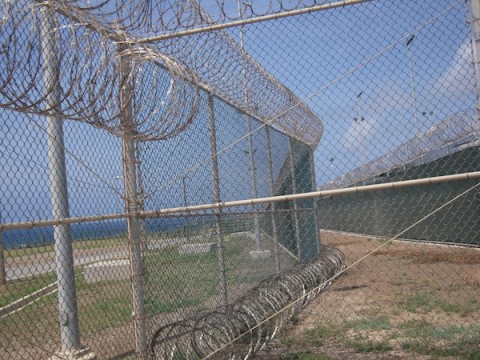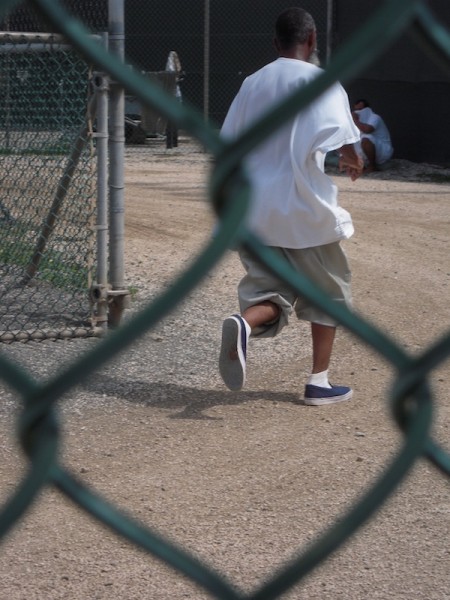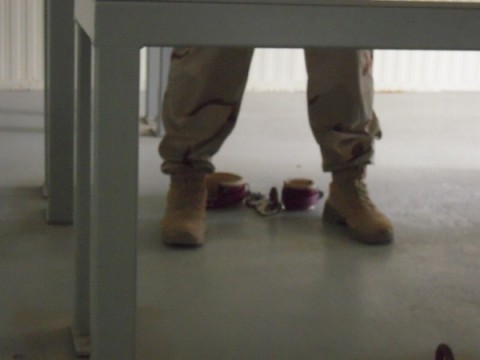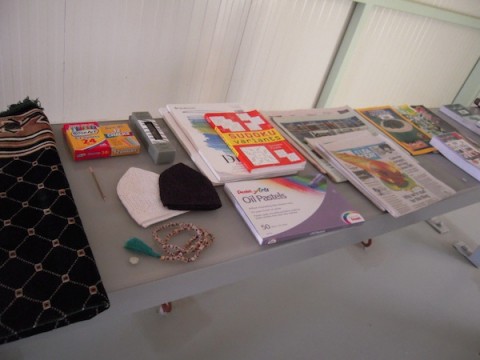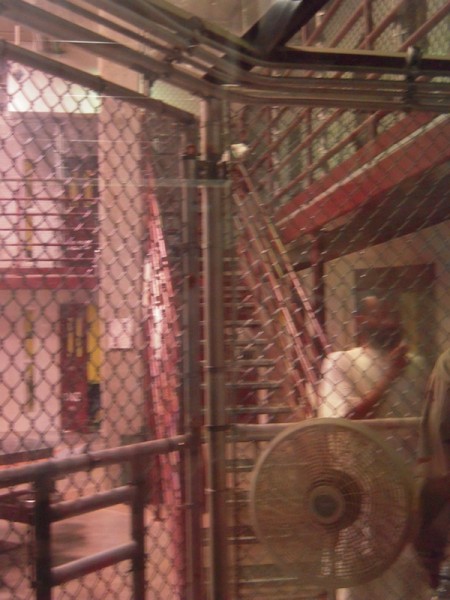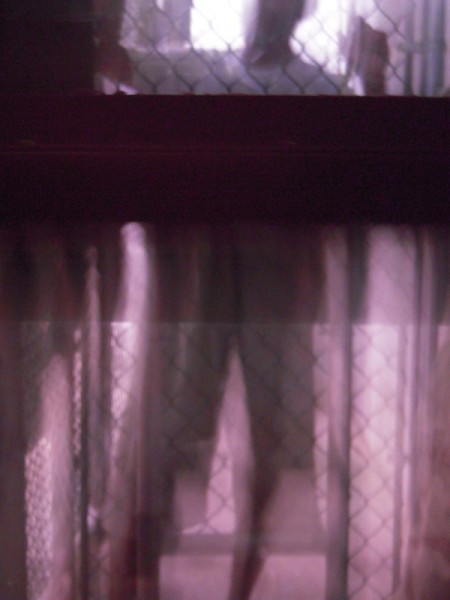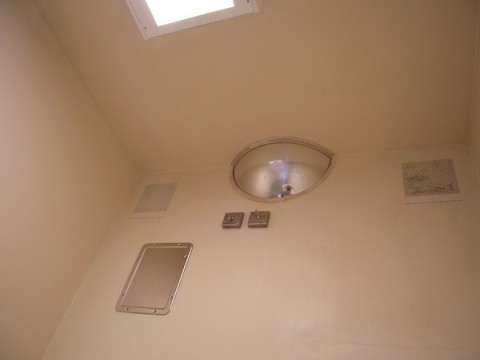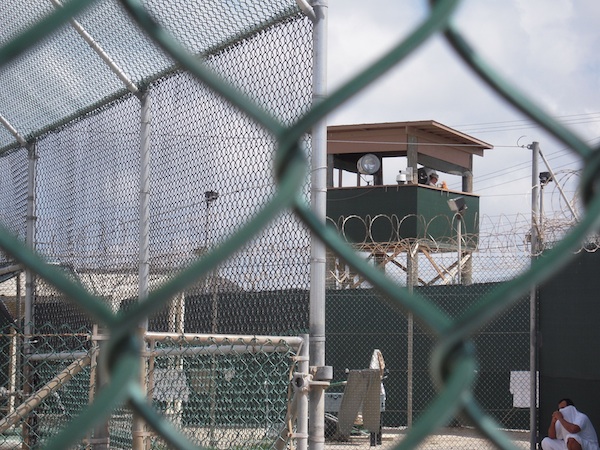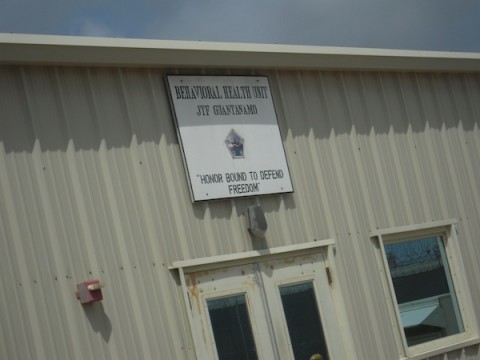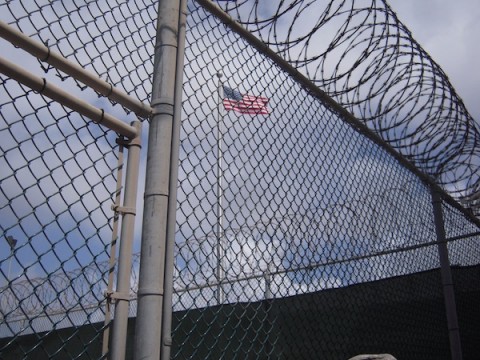A Photographic Tour of Guantanamo Bay
Spencer Ackerman, reporting from Guantanamo Bay, provides a glimpse into the lives of detainees at the notorious detention center.
Jul 31, 20205.8K Shares253.1K Views
Over four months after President Obama missed his self-imposed deadline to shutter the detention facility at Guantanamo Bay, approximately 180 detainees remain behind the wire and within the walls of the seven camps that comprise Camp Delta. All have been there for years on end: The most recent detainee arrived in 2007. Most have never been charged with any crime or wartime offense. One of the few who has, Omar Khadr, a Canadian citizen who has spent his teenage years and early 20s in Guantanamo since 2002, will dispatch his lawyers tomorrow morning for a pre-trial hearing seeking to ban what they contend is coerced testimony from his military commission for murder and material support for terrorism. Some detainees have even been cleared for release: Fewer than ten Uighur detainees (the military does not disclose the specific number) remain in a facility called Camp Iguana, where they are considered “residents” and not detainees, as their release has been ordered by U.S. courts but no country has agreed to take them in.
[Security1] It’s unclear when the Obama administration will actually close the facility. There’s a possibility it could still carry out the closure before the end of the year: The Defense Department has asked Congress for $350 million for all aspects of closing the Guantanamo detention facility and purchasing a new Illinois prison to house the residual population that has yet to be tried or repatriated (as well as about 48 detainees the administration seeks to hold in indefinite detention). It has placed the money in the politically potent request for funding operations in the Afghanistan war. That choice itself reflects the bipartisan resistance in Congress to actually closing the facility, despite both party’s presidential candidates in 2008 running on a pledge to end an international symbol of infamy.
Accordingly, a group of reporters toured a few of Camp Delta’s nine facilities today to get a highly constrained glimpse of residual life in Guantanamo Bay. The military command has reviewed every photograph presented here to prevent inadvertent disclosures of classified information; seven photographs I took were deleted.
A rare glimpse between two outer layers of security surrounding Camp 5 and Camp 6, two facilities modeled on prisons in Indiana and Michigan. Recently-relaxed rules for restricting photography now allow some visual representation of the shoreline. We did not get to see Camp 7, a facility containing high value detainees. “We do acknowledge there’s a Camp 7,” said Lt. Col. Andrew McManus, the deputy commander of the Joint Detention Group, which oversees detention operations. “That’s all we say about it.” When I asked if the 14 detainees at Guantanamo Bay who arrived in September 2006 from undisclosed prisons run by the CIA — including Khalid Shaikh Mohammed and his fellow 9/11 co-conspirators — lived in communal housing or are held in individual cells, McManus replied, “I know nothing about that whatsoever.”
A detainee jogs around the central recreation yard in Camp 4, a communal-housing facility for detainees who comply with guards’ orders. When he saw a group of reporters taking pictures of the area, he yelled out in English, “Put me beside bin Laden!” The consensus of the press corps was he was joking.
Two contrasting images from an area in Camp 4 used for holding educational classes. With the exception of the prayer mat, the recreational materials on this table — the Soduko book, the art supplies and the magazines — are comfort items provided to help “compliant” detainees at Camp 4 while away the time. In the makeshift classroom, detainees watch DVDs — some are said to be partial to Jackie Chan movies and the Alaskan fishing show “Deadliest Catch” — as well as attending art and language and “life skill” courses. But across the floor in the classroom are small metal eyebolts used to shackle detainees to their seats during the classes. “For the safety of the instructor, the detainees are shackled,” McManus explained.
Camp 6, modeled on a Michigan prison, is a $37 million facility consisting of eight blocks of 22 cells. It’s a communal-living facility, meaning detainees live with each other, although there are several cells that aren’t big enough for more than a single occupant. Here, a detainee — a slight man, maybe about 5 foot 5 — ambles over from a common area to speak amiably with a guard, who’s separated from the detainee by a schoolyard-fence style barrier. I was allowed to publish these photographs because I blurred the detainee’s faces.
This is the ceiling of a single-occupancy detainee’s cell in H Block in Camp 6, just above the toilet. I laid down on the concrete platform set up for a detainee’s bed to get a sense of what might be the last thing he sees before going to sleep at night.
Another shot from the recreation yard at Camp 4. The only towers we’re allowed to photograph are those with guards manning them, and only then if the guard’s face isn’t able to be determined. Similarly, the crouching detainee below pulled the collar of his shirt above his nose, obscuring his face enough so that a photograph of the scene could clear a security review.
We weren’t allowed inside this Camp 4 facility. While there’s no indication this behavior persists at Guantanamo, early in the detention facility’s existence, behavioral-science teams were involved in abusive interrogation and detention operations, as a Senate Armed Services Committee report in 2008 meticulously documented. There haven’t been accounts of behaviorally-enhanced interrogations for years. “We have visitors here every day of the week,” McManus said, including the International Committee of the Red Cross.
A view of the American flag through the perimeter fences around Camp 4 and Camp 5. A Toronto Star journalist remarked that it was probably the single most photographed American flag around. Then she snapped some pictures.

Hajra Shannon
Reviewer
Latest Articles
Popular Articles
